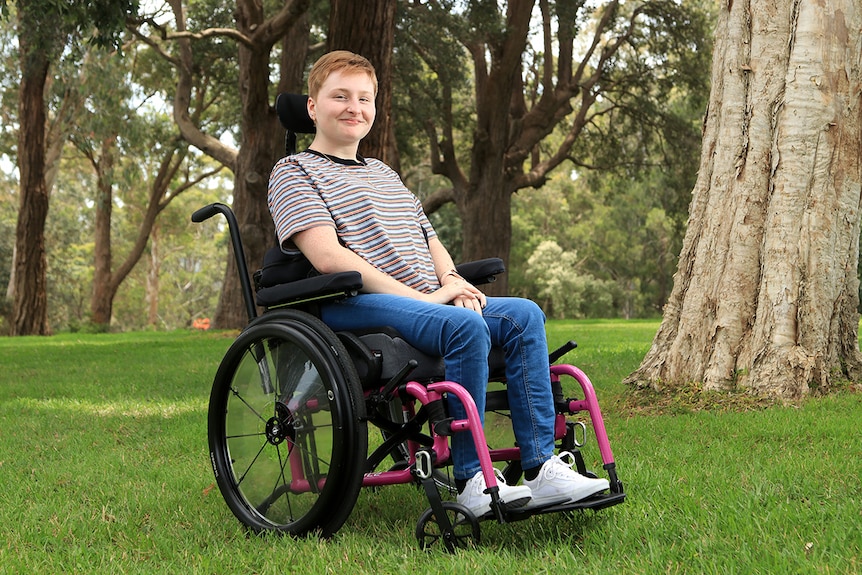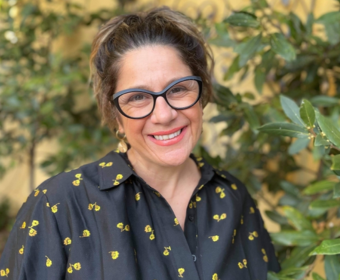“My wheelchair is definitely part of my identity but it doesn’t define me”
8 April 2021

Lily knows how many people in the able-bodied world view people who use wheelchairs.
It’s there in the countless stares she experiences whenever she ventures out into her regional New South Wales town, and in every averted gaze.
There’s one day, in particular, Lily remembers feeling more of these looks than any other: her first day of Year 7.
She didn’t know anyone. Instead of the 80 or so students, she was used to sharing her former primary school with, there were about 900 other pupils to contend with.
When the 18-year-old Yuin-Jerrinja woman rolled into the first school assembly, everyone turned and stared at her.
For Lily, the stares were more than just curious glances
“I remember just feeling terrified and wanting to go home,” Lily begins.
“I wanted to shout, to scream that what they saw wasn’t who I was.”
For a brief moment, she considered asking her parents if she could switch to homeschooling, just so she wouldn’t have to interact with all the people who had othered her the moment they saw her.
As the day went on, Lily says she felt like some of her fellow students didn’t understand why she was even at the school.
“They didn’t seem to understand why someone like me was at a ‘normal’ school,” she remembers.
“Because I’m in a wheelchair, they thought I should be in a school for students with special needs.”
While Lily says most of her fellow students eventually relaxed around her, many continued staring at her throughout her six years at the school, and her high school education was punctuated by other people’s false assumptions about her, her disability, and her wheelchair.
Still, the teenager slowly made friends. With them at her side, she felt comfortable enough to begin the process of learning not to pay too much attention to those who regularly singled her out.
But the entire experience still had a significant impact on her mental health: Lily began to internalise the ableism she was experiencing.
“I was very upset and angry for a long time and felt very ashamed of myself,” she says.
“I used to hate the idea of being in my wheelchair in the community and being seen by other people [because of the way] people would always stare at me.”
This is why Lily wants you to know her story
Lily doesn’t want you to hear her story and feel inspired by the way she rose above it all, or for her experiences to be reduced to a feel-good tale about overcoming adversity.
She’s telling it because she wants to help change people’s perceptions about wheelchairs — though Lily is aware of the fact that everyone’s experience is different.
She wants you to listen because she believes if more able-bodied people saw her wheelchair as she does — as an extension of herself — they wouldn’t register it as something to stare at.
“Behind those stares and negative attention [are often able-bodied people] who don’t have any real knowledge of people with disability,” she says. “They’re just going off stereotypes.
“I think many able-bodied people don’t view wheelchairs as significant to the lives of those who use them,” she continues.
“I don’t believe able-bodied people understand how much their wheelchair is basically their lifeline.
“There would be no way for people in wheelchairs to get around and interact within their community [without wheelchairs]; they allow us to participate.”
Negative attention doesn’t come from nowhere
People With Disability Australia (PWDA) looks to models of disability to explain how mobility aids like wheelchairs can be perceived as “flaws” that require attention, instead of an extension of the person using them.
“According to the medical model of disability, ‘disability’ is a health condition dealt with by medical professionals. People with disability are thought to be different to ‘what is normal’, or abnormal. ‘Disability’ is seen to be a problem of the individual,” the national Australian disability rights and advocacy organisation says.
“From the medical model, a person with disability is in need of being fixed or cured.
“From this point of view, disability is a tragedy and people with disability are to be pitied.”
Giancarlo de Vera, who is a senior policy officer with PWDA, says “people seek to correct so-called conditions that ‘need correcting’ [because of the medical model]”.
“And that leads to people wanting to either internally correct themselves or impose their worldview on people who ordinarily wouldn’t want those interventions, had it not been for those attitudes.”
Mx de Vera says this can manifest in the everyday through people without disability seeing those with disability “as a ‘burden’ and as ‘objects that need to be helped'”.
“And at times it also means that they will try and stop people with disability from participating in things they have the right to, until those so-called ‘conditions that need correcting’ are fixed.
“This is how people with disability get excluded from everyday things that everyone else likes to enjoy, like socialising, connecting with friends and forming relationships.
“And that really, really becomes a dangerous situation.”
The alternative is the social model of disability, which is recognised by the United Nations Convention on the Rights of Persons with Disabilities.
The social model sees disability as constructed by “the interaction between people living with impairments and an environment filled with physical, attitudinal, communication and social barriers”, PWDA says.
“A social model perspective does not deny the reality of impairment nor its impact … it calls for accommodation of impairment as an expected incident of human diversity.”
But the effects of the medical model of disability are still being felt across every level of society.
Discrimination is an everyday reality for many people in Australia with disability and has been found to have myriad negative effects on health (including higher levels of psychological distress) as well as social and economic circumstances, according to the Centre of Research Excellence in Disability and Health.
Here’s how Lily feels about her wheelchair now
While she wishes she hadn’t had to, Lily’s grown used to the way people with limited knowledge of people with disability can view her wheelchair.
She admits it was a lengthy process: “It wasn’t an overnight realisation — it took me a long time to understand.”
Lily says acceptance came with the realisation that her wheelchair would always need to be a part of her life, and that things wouldn’t get better if she didn’t accept that.
“While my wheelchair is definitely part of my identity, it doesn’t define me,” she says.
“But I know that wheelchairs can mean a lot more to certain types of people.
“[People who use wheelchairs] are all different and we all have different opinions about things.”
Lily’s experiences have inspired what she wants her life’s work to be: at the moment, she’s studying social work at university.
“I understand how hard it is for younger people to see past their differences,” she says.
“And I want to make sure those people don’t feel alone — which is how I felt for a long time.”





